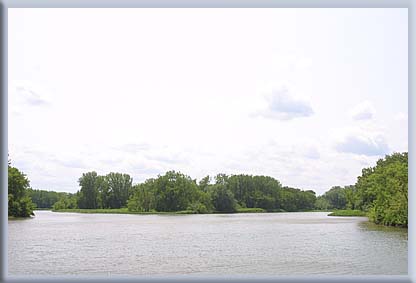 |

|
 |

|
|
Sander (Alexander) Leendertse Glen (Abt. 1600, Scotland - 13 Nov 1685, Schenectady (Scotia) NY) + (31 Oct 1638, Oudekerk, Amsterdam, Holland) Catalyn (Duncanson) Dongan (15 Apr 1621, Alloa, Clackmannan, Scotland - 12 Aug 1684, Scotia, Schnectedy NY)
CHILDREN:
Captain Sander Glen (1647, Albany NY; - 1695, Schenectady NY)
Johannes "Major Coudre" Sanderse Glen (5 Nov 1648, Albany or Scotia NY; - 6 Nov 1731, Schenectady NY) |
|
Jacob Sanderse Glen (Bet. 1645 - 1647, Albany NY; - 2 Oct 1685, Albany NY) + Catherina Jansz Van Witbeck (b:1651, New Amsterdam NY)
CHILDREN:
Johannes Glen (1675 - 1707)
Jacob Glen (b: 1679)
Helena Glen (21 Nov 1683, Albany - 1725) |


|
|
|
|
|
|
|
|
|
|
Schenectady County, New York: Its History to the Close of the Nineteenth Century Austin A. Yates |
|
Glenville was named after Sanders Leenderste Glen, the original patentee. It was formed from the fourth
ward of Schenectady, April 14, 1820, and is the only town in the county north of the Mohawk River. The
country around Scotia was granted in 1665 to Glen, a native of Scotland, who moved to Holland in 1645, on
account of religious persecution, and from there migrated to the New Netherlands.
The greater part of the surface of the town is covered with a thick deposit of drift which consists principally of clay, with some outcrop of slate with hard pan in the sourthern and western parts and loam in the eastern. Generally, the underlying rock is the shale of the Hudson River group, which crops out in the valleys and the bottom of the rivers. The central and western parts are occupied by rugged and wooded hills rising abruptly from the valley of the river to a height of three hundred feet. The eastern part of the town is nearly level. The Mohawk intervales have been devoted to the culture of broom corn and are very fertile. The principal streams are: Crabskill, Chaugh-ta-noon-da, Alphlaata and Jan Wemp's Creeks and Verf Kill. Sander's Lake in Scotia is about a mile in circumference. Among the first settlers were the Glens, Sanderses, Veiles, Van Eppses, Ostrands, Tolls, Barhydts, Browns, Johnsons and Carpenters. The village of Scotia lies between the Mohawk River and Sander's Lake and is about one-half mile from Schenectady. Reesville was a suburb of Scotia, but the two places have grown together and are now known only as Scotia. Scotia, the ancient name of Scotland, was the name given by its first settler. This village commences at a point nearly opposite the eastern extremity of the city and extends westward about two miles along the north side of the Mohawk. On November 3, 1665, the first patent was granted by Governor Richard Niccols to Sanders Leendertse Glen. |
| Early New York Families, 1600s-1900s |
|
Barent [sanders], son of Robert and Elsje (Barentse) Sanders, was born May 8, 1678, buried
in the old Dutch church, June 22, 1738. It was during his lifetime that the ancient
Glen-Sanders house at Scotia, Schenectady county, New York, was built, which became
the Sanders homestead for six generations, in fact, it was erected when he was thirty-five
years old, in 1713. This house but replaced the older, almost upon or near the same site,
and of the self-same material, but half a century later. It is, in 1910, in
admirable condition throughout, and attracts visitors daily to it despite the fact that
it is at least a mile from the city of Schenectady. The original mansion was built
about 1659 by Alexander Linsey Glen, founder of that family in America, who was one of
the original "Fifteen Proprietors" of Schenectady. He was born about 1610, near
Inverness, Scotland, and when he crossed to Holland because of religious persecution,
the Dutchmen called him Sander Leendertse. He was a partisan in the days of Charles I, and
had to flee to Holland to protect himself, where he was warmly received. He later
emigrated with his wife, Catherine Dongan (Catalyn Doncassen), and the early Dutch settlers
to New Netherland. He was a man of liberal education, which he received in Scotland,
and possessed a large fortune; was typical in physique and temperament of his native heath, and was
known as a strong man. He was the agent of the Dutch West India Company at Fort
Nassau on the Delaware river, in 1643, and in 1646 was granted land at Graves End on Long Island.
In 1658 he removed to Schectady, where he commenced building his stone mansion.
This was the first house built upon the north bank of the Mohawk river for the entire one hundred and thirty-five miles of its length. It was constructed close to the water's edge and against the side of a steep slope leading to the broad, sandy plateau on which the village of Scotia stands. It was located about three-quarters of a mile west of the old Glenville bridge leading across the Mohawk to Schenectady. Herein for generations were deposited important colonial documents. It stood about one hundred feet south of the present Sanders edifice, and had to be taken down because each spring the high water was an inconvenience and a serious menace, so in 1713 much of the same material was used in the construction of the one now occupied by the Sanders family, and the inroads of the river have obliterated even the outline of where stood the foundations, filling the same in with silt. Betwen the two sites was the place where the Indians enjoyed burning their white victims at the stake. On the flats to the east the savages grew their corn, as set forth in the title as their "cornfield." He named the place Scotia in memory of the land of his birth. The title was from the Mohawk Indians from 1658 to 1665, and then he obtained a patent from the crown. He was a religious man, and finding itirksome to drive the seventeen miles to Albany every Sabbath morn, in 1682 built the Dutch Church which was also used as the town hall. Mr. Glen also owned a town lot in Schenectady, with two hundred feet frontage on Washington avenue, the residence theeon occupied by his descendants until burned in 1819. He died in 1686, and was buried under the church beside his wife, who had died the previous year. The reason why the house was neither attacked nor burned during the great massacre of 1690 is interesting. It was Major John Alexander Glen, son of the former, who built the present mansion in 1713, and who was alive at the time of the massacre. The Glens were very friendly with the Indians, alive also to rescue a white captive from the savages. One day a party of Mohawks brought to the original house a Jesuit priest who had come down from Canada, where were the French, intending to have him locked up by Major Glen until the following day, when they proposed to torture him before taking his life. Glen pretended to fear the magical powers of the priest, and having two keys to his cellar door told the Indians that they might lock the priest in there, and on handing one key to the redskins remarked that he would have nothing to do with the matter, for he did not believe a key would hold a priest confined so long as there was a keyhole through which he was doubtless able to send his spirit and body lifewise. Early the next morning, Major Glen placed the priest in a cask and despatched it in his cart for Albany. This act had its important bearing. It gratified the French of Canada, so when Schenectady was attacked on the bitterly cold night of February 8, 1690, by the French and their savage allies under Seignior Le Moyne de Sainte Helene, it was ordered that no harm be done to the house of the Glens or to any relative. Glen undertook to persuade the Indians that he had many relatives in Schenectady, whom he wished spared; but the number increased so extensively that he had to desist or the Redmen, perceiving the ruse, would spare none, as they began to have doubts. In this massacre, now a feature in colonial history, about eighty houses were burned to the ground and some three hundred souls were slain. The present house is charming in its colonial quaintness. The walls are unusually thick and the timbers massive. The latter were cut from trees so large that they were first cut into lengths, and these split into four timbers each two feet square. They are wonderfully dovetailed together and fastened with wooden pins. The doors are wide, and what is peculiar they are made of one mammoth piece of wood, while those leading out are divided in the middle, the upper portion set with small lights of glass. Across the exterior, beneath the eaves, are to be seen the large iron letters and the numbers, "A O 1713." The furniture, silverware and crockery in this house have been in use for generations, and attract much attention by their beauty. In the attic were stored countless documents from which a history might be written; but unfortunately at the time of the civil war, when paper was in great demand, about a tone was sold as junk. By the marriage of Debora Glen to Johannes Sanders, the house passed into the Sanders family. |
|
|
| LINKS |
|
Alexander L. Glen and Catherine Duncanson Glen Sanders Mansion Schenectady County Historical Society - Furniture from Glen-Sanders Mansion |
|
NJ Governor Lewis Morris |
 Breese Family |
 Night Before Xmas Henry Livingston |
 President George Bush |
 Father Bradley Van Deusen |
 Mother Jean Van Deusen |
 Home |
 Suggested Favorite Pages |
 Site Map |
 Copyright © 2004, Mary S. Van Deusen
Copyright © 2004, Mary S. Van Deusen
|